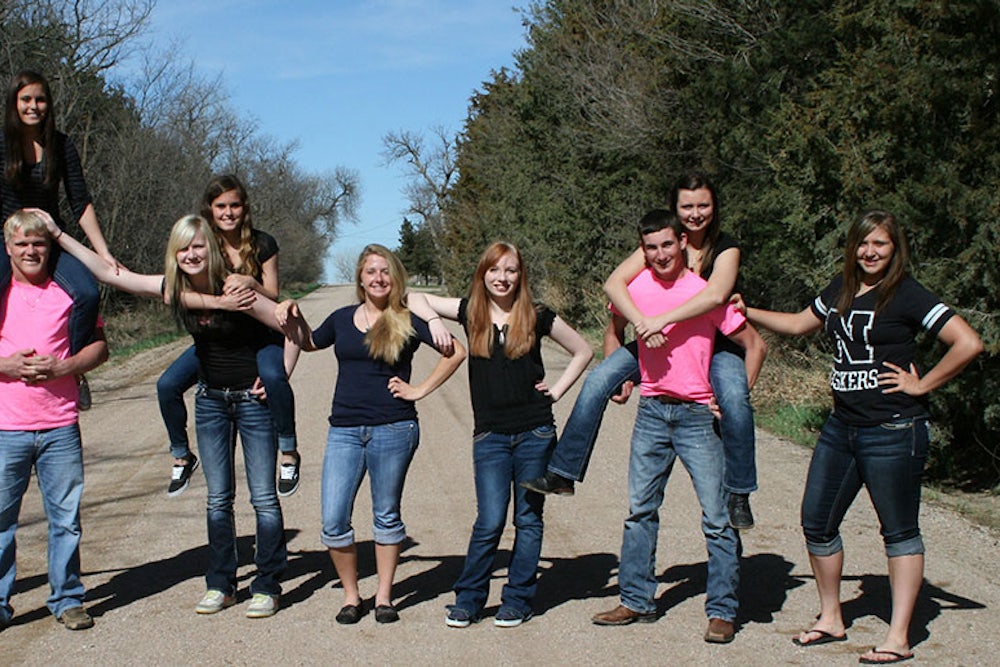Imagine a contemporary remake of Hoosiers. Its plot might not look much like the original. Instead of small-town redemption, this updated Hoosiers would tell a story of logistics. Triumph would not be a buzzer-beating state championship so much as simply managing to field a team in a corner of the country where bus rides last hours and entire classes now number in the low single digits.
For the first time in U.S. history, the populations of the nation’s rural counties are not just sparse but shrinking, by as much as 20 percent over the past five years, according to an analysis by William H. Frey at the Brookings Institution. There are lots of explanations for this trend: fewer factories, fewer workers needed on mechanized farms, fewer babies born as the birth rates of local families have declined. And there’s little reason to expect it to reverse as job creation consolidates in cities and suburbs.
While the Census Bureau keeps the hard numbers on the decline, it can also be measured—less scientifically but more evocatively—through the senior-class photos of these counties’ high schools. Scanning the young faces, one contemplates the civics lessons taught to future generations. Small-town mythologies have shaped American politics for better and worse. But what happens when those small towns are no more?

DOWNIEVILLE SCHOOL
Downieville, California
Enrollment (9–12 grade): 15
Some students at this school near the Nevada border have to catch the bus at 5:30 in the morning in order to make the opening bell. Next year, administrators want to cut back on teachers (Downieville only has two full-time and two part-time now) and enroll kids in online videoconference classes at the only other high school for at least 50 miles, the road to which is nearly impassable in winter. Says English teacher Lynn Fillo: “It’s kind of going back to the one-room schoolhouse.”

LOYALTON HIGH SCHOOL
Loyalton, California
Enrollment (9–12 grade): 95
“We’ve got a college-going culture here,” says English teacher Janet McHenry of Loyalton, the school that may soon beam lessons to the even more isolated Downieville. “But we do find a lot of our funding evaporating because of formulas created by the state. We’re not the sort of place where a wonderful generous foundation would extend a grant, because we are so small.”

HERREID SCHOOL
Herreid, South Dakota
Enrollment (9–12 grade):36
Colleen Rueb was one of 40 graduates from Herreid High in 1977. Today she’s the school’s business manager, as well as a full-time farmer, intimately familiar with the economic factors that have cut class sizes by more than two-thirds. “If you continue this occupation, it’s gotta be in your heart,” she says, “because some years ... you’re not gonna make any money.” Five years ago, local officials devised a repopulation plan inspired by the pioneer era: a housing-incentive program based on homesteading. Transplants who build new homes are loaned up to $5,000, forgiven after five years of full-time residency.

LAVINA PUBLIC SCHOOL
Lavina, Montana
Enrollment (9-12 grade): 25
For 36 years, Alan Grammens has taught science at Lavina. He says it takes a visit to the town to appreciate its charms: “You can get out on a high hill in the evening, and there are just a few lights, and you can see for miles and miles,” he says. “I’ll take you in the back of my pickup, like I do my cousins when they come from back East.” What guests won’t see is a lot of young people. Lavina graduated just ten students this spring, and neighboring Ryegate just one.

WHEELER CENTRAL
Bartlett, Nebraska
Enrollment (9-12 grade): 48
Since the 1960s, when Wheeler County consolidated all its schools into a single facility, Wheeler Central has drawn its students from across the county’s 567 square miles. But amid the ongoing exodus—the area’s population has dropped by 9 percent since 2009—even those generous boundaries aren’t enough to keep the school full. Its ten seniors are less than half the number the school had in 2007. Next year, its seventh- and eighth-grade classes will total six students combined.

CLARK COUNTY JR.–SR. HIGH
Dubois, Idaho
Enrollment (9-12 grade): 45
Clark County High once served a robust rural population of small farmers, ranchers, local business people, and workers at the U.S. Sheep Experiment Station down the road. When those families started leaving, migrant workers filled in, renting their plots and working at one of the remaining employers, the Idahoan Foods potato plant. The plant’s gone now, too, and Clark’s population decline is the second-steepest in the country: more than 100 of the roughly 1,000 residents it had have left over the last five years.
